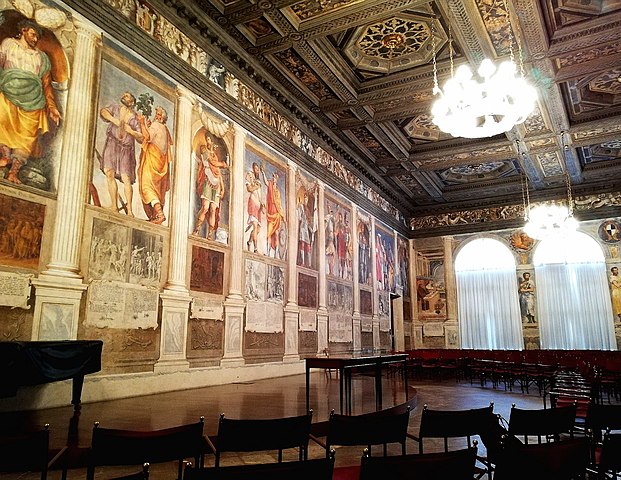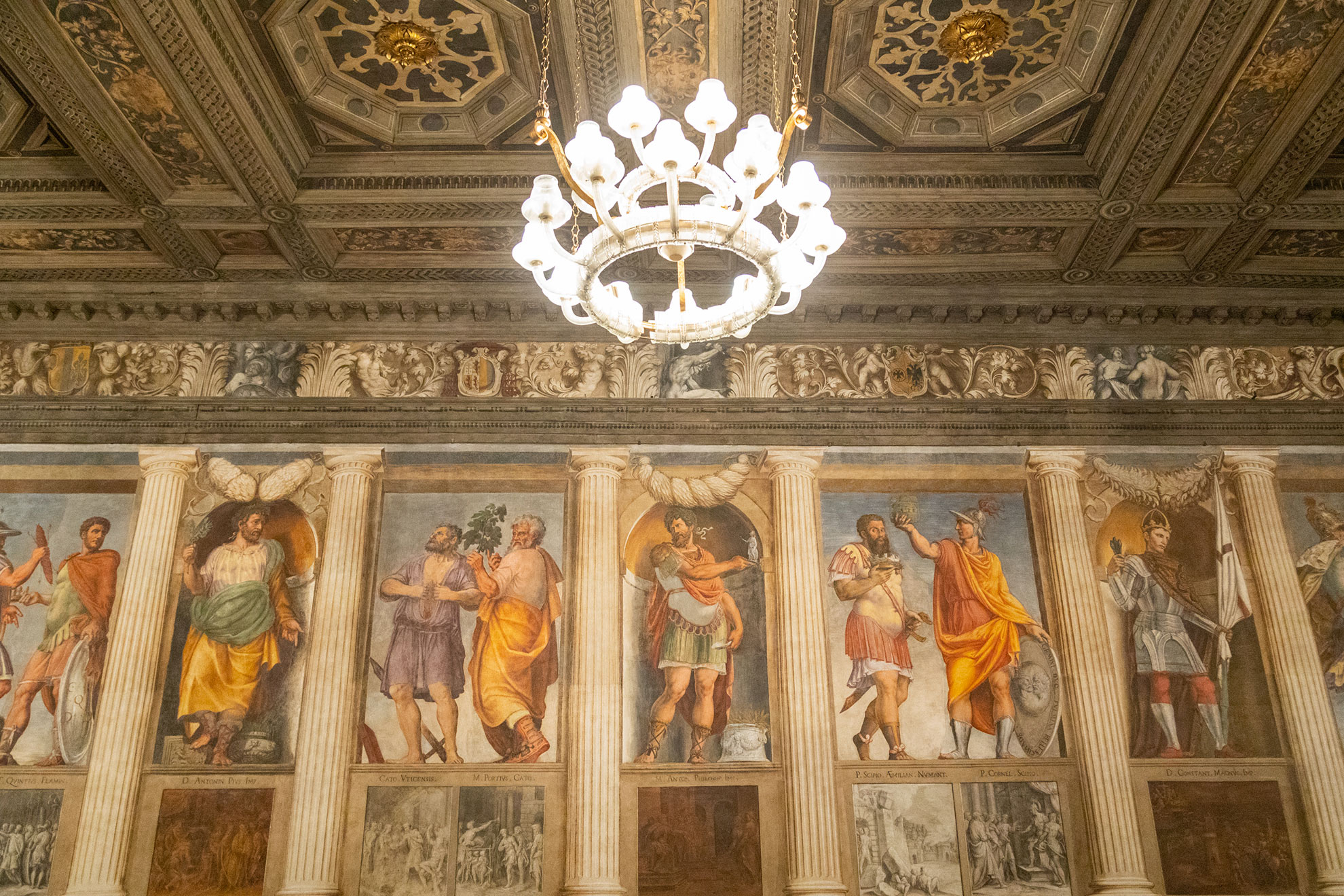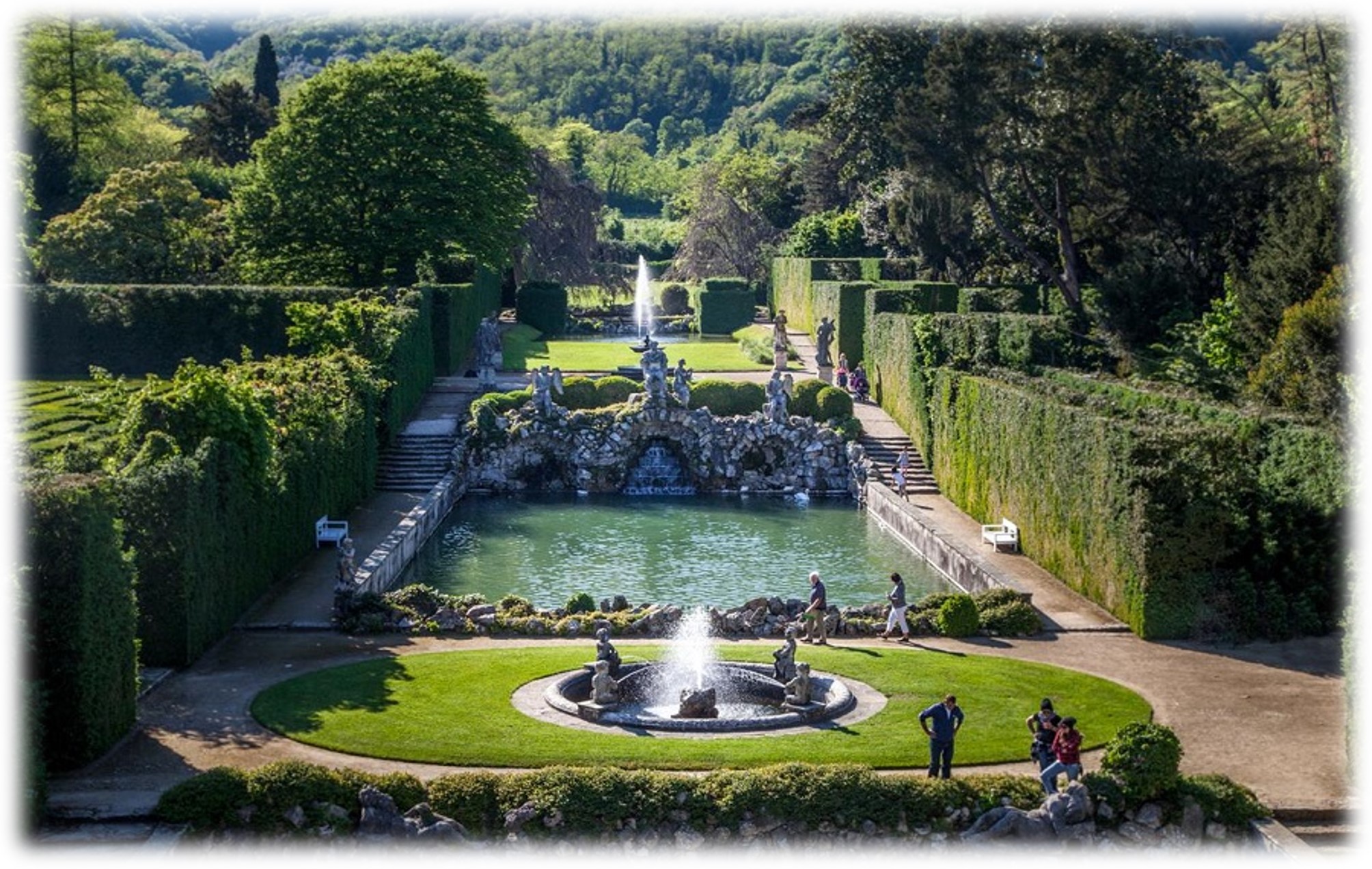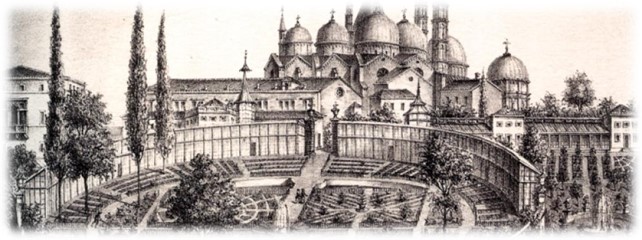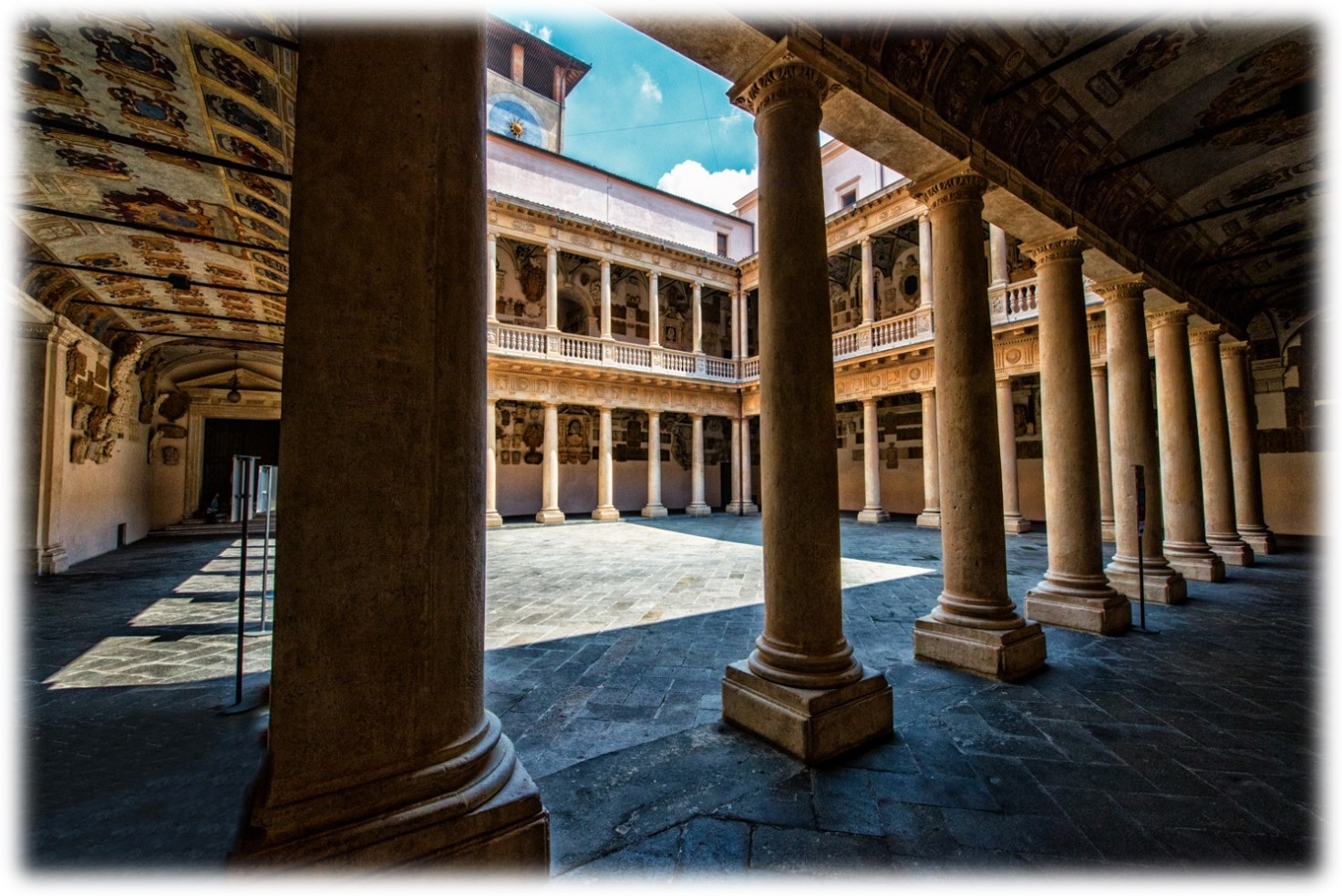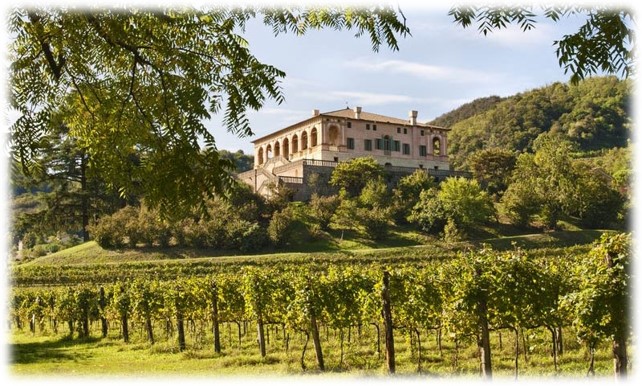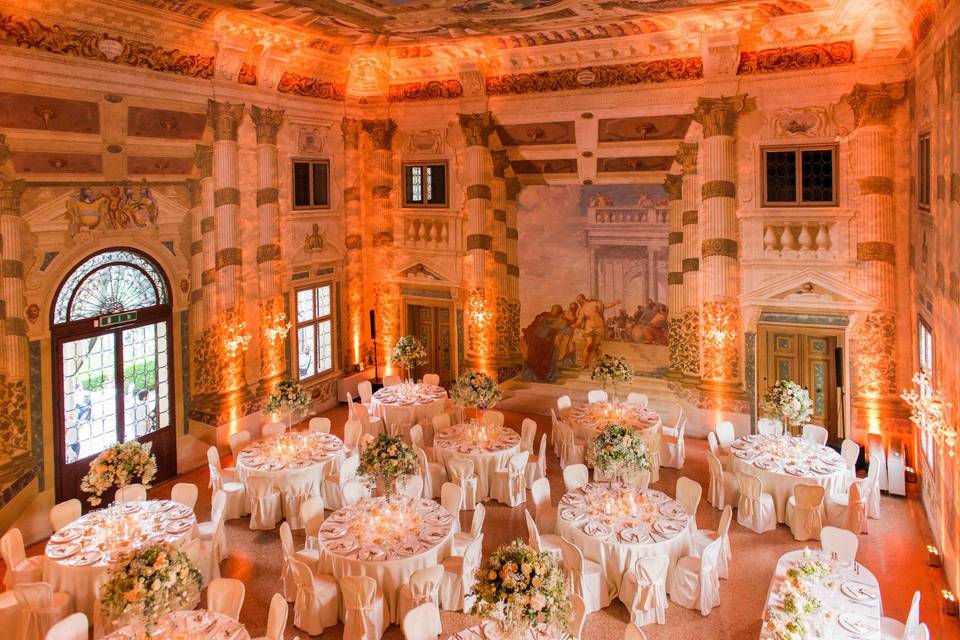Concert at “Sala dei Giganti”
Tuesday, September 3rd
The Concert
We are delighted to offer a special concert to the participants of BeLI24, providing a refreshing interlude to the intellectual rigor of our sessions. This musical performance will feature a talented ensemble of musicians, each bringing a wealth of experience and artistry to the stage. The repertoire has been carefully curated to include a selection of classical compositions specifically written for small ensembles, showcasing the intricate interplay and rich harmonies that this format uniquely affords.
In contrast to the grandeur of orchestral concerts, this intimate setting will allow attendees to experience the music in a profoundly personal way. The close proximity to the musicians will enable the audience to appreciate the fine details, subtleties, and nuances of each piece. This concert will not only highlight the technical prowess and expressive capabilities of the musicians but also foster a direct and meaningful connection between the performers and the listeners.
As the music unfolds, you will be able to witness the seamless blending of tones and the dynamic exchanges that define chamber music. This rare opportunity promises to be a memorable and enriching experience, offering a perfect harmony between scientific exploration and artistic enjoyment.
More information on the concert can be found here.
The Place
Sala dei Giganti originally belonged to the Palazzo dei Carraresi (from the name of the da Carrara family that governed Padua in the 14th century). This great hall gets its name from the size of the figures – personages of Ancient Rome – depicted in the frescoes found within. The original cycle, now lost, was inspired by Petrarch at the invitation of Francesco I da Carrara, whose guest he had been previously, on the basis of his “De viris illustribus”, recounting the lives of illustrious men in the history of Rome. The first decoration of the hall, completed a few years after Petrarch’s death (1374), is attributed to either Altichiero da Zevio or Jacopo Avanzi.
Among the personages portrayed was Petrarch himself, posthumously: his portrait is the only one of the older cycles that has survived to this day. The hall was completely renovated in the 16th century. A new cycle of frescoes was completed around 1540, by Domenico Campagnola and his collaborators, in which the theme of two centuries earlier was taken up again, albeit with some changes to some of the subjects depicted.
Sala dei Giganti housed the University Library from 1631 to 1912. The frescoes were restored to their original splendour during recent work, completed in 2008.
Social Excursions
Wednesday afternoon, September 4th
BeLI24 is excited to offer all participants the opportunity to join a complimentary social excursion, included with registration. There are four options to choose from.
Each participant can sign up for only one of the four available tours. Reservations are MANDATORY and must be made through the REGISTRATION LINK NO LATER THAN August 29, by logging in with the personal access data provided during the registration procedure.
Reservation is subject to availability. Tickets for each tour will be available on a first-come, first-served basis.
Monumental Garden of Valsanzibio
Nestled in the heart of the Euganean Hills, this historic garden is a masterpiece of Italian baroque landscape design, dating back to the 17th century.
The University of Padua Botanical Garden and Saint Anthony Basilica
Established in 1545 on the property of the Benedictine monks of St. Justina, Padua Botanical Garden is the oldest existing university botanical garden in the world.
Saint Anthony Basilica is one of the most important pilgrimage sites in the Christian world, this magnificent basilica, known as “Il Santo,” houses the tomb of Saint Anthony of Padua and is a masterpiece of Italian Gothic architecture.
Bo Palace of the University of Padova
This iconic building, home to the University of Padua since 1493, is a treasure trove of history, art, and academic excellence.
Villa dei Vescovi
Standing out on a knoll of the Euganean Hills, encircled by the lush, untainted greenery of the Veneto countryside, the Villa dei Vescovi is a highly significant villa that blazed a trail in this part of north-eastern Italy (and, indeed, far beyond) for a return to classical models, with echoes of the Roman Renaissance, thus anticipating Palladio’s widely copied aesthetic.
Social Dinner at “Villa Foscarini-Rossi”
Wednesday evening, September 4th
The Villa
Villa Foscarini-Rossi is a 17th-century Venetian villa located in Stra, along the Riviera del Brenta, not far from Venice and Padua.
For the construction of the Villa, which was meant to best represent the importance of the household, the noble Venetian family Foscarini commissioned the illustrious architect Vincenzo Scamozzi and entrusted frescoes and decorations to artists such as Pietro Liberi and Domenico de’ Bruni.
Today, after a major restoration that brought the architecture and frescoes to their former glory, Villa Foscarini-Rossi has been opened to the public.
The Foresteria hosts events, receptions and exhibitions, while the rooms of the Villa host the Footwear Museum, with more than 1,500 models of luxury women’s footwear, produced by the company for more than seventy years, in collaboration with the most important names in Italian and foreign fashion (Fendi, Yves Saint Laurent, Givenchy and many others).
The departure by bus will be at 19:30 from NH Hotel.

